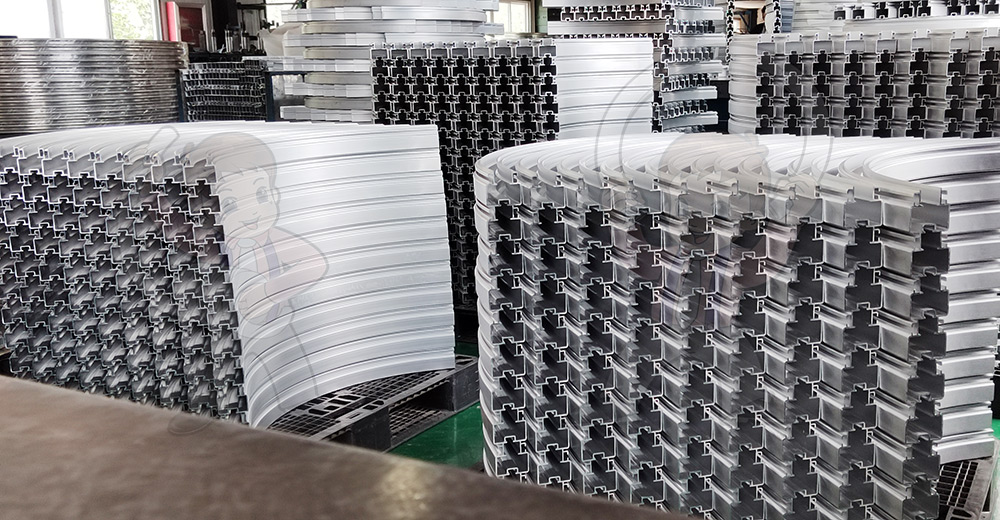The Science of Aluminum Bending: Understanding Material Properties and Techniques
Aluminum is a widely used metal in various industries due to its lightweight nature, excellent corrosion resistance, and high strength-to-weight ratio. Bending aluminum is a critical process in manufacturing and fabrication, allowing for the creation of complex shapes and structures. Understanding the science behind aluminum bending involves a deep dive into its material properties, the mechanics of bending, and the techniques employed to achieve desired results.
1. Material Properties of Aluminum
-Strength and Ductility: Aluminum exhibits a unique combination of strength and ductility, which allows it to undergo significant deformation without breaking. This section will explore yield strength, ultimate tensile strength, and how different aluminum alloys affect these properties.
-Elasticity and Plasticity: Understanding the elastic and plastic regions of aluminum is vital for predicting how the material will behave during bending. This includes discussions on the stress-strain curve and the concepts of elastic limit and permanent deformation.
-Work Hardening: Aluminum can become harder and stronger through work hardening, a process that occurs during bending. This section will explain how bending affects the microstructure of aluminum and its implications for further processing.
2. Bending Techniques
-Air Bending: A widely used technique that involves the use of a punch and die to create a bend without making contact with the die. This section will cover the advantages and limitations of air bending.
-Bottom Bending: This technique ensures the material is pressed down into the die, allowing for more precise bends. The discussion will include tooling requirements and applications.
-Roll Bending: A method suitable for creating large, curved shapes. The mechanics of roll bending, including the setup and adjustments required, will be detailed.
-Impact Bending: A technique that employs a sudden force to create a bend, suitable for specific applications. This section will explore the advantages and potential risks of using impact methods.

3. Factors Affecting Aluminum Bending
-Material Thickness: Thicker materials require different bending techniques and considerations. This section will address how thickness influences bend radius and tooling choices.
-Bend Radius: The relationship between bend radius and material properties will be discussed, highlighting the importance of maintaining appropriate radii to avoid cracking or failure.
-Temperature Effects: Heating aluminum before bending can enhance its ductility. This section will explain how temperature affects the bending process and the considerations for heat treatment.
4. Tools and Equipment
-Bending Machines: An overview of various bending machines used in the industry, including hydraulic press brakes, mechanical press brakes, and CNC bending machines.
-Tooling Requirements: A discussion on the types of dies and punches necessary for effective bending, including custom tooling for specific applications.
-Measurement and Alignment Tools: Importance of precision in bending, including the tools used for measuring angles and ensuring proper alignment during the bending process.
5. Quality Control in Aluminum Bending
-Inspection Techniques: Methods for inspecting bends to ensure they meet specifications, including visual inspection, gauges, and non-destructive testing methods.
-Common Defects: Identification and analysis of common bending defects such as cracks, wrinkles, and excessive springback, with strategies for prevention and correction.
-Standards and Specifications: Overview of industry standards related to aluminum bending, ensuring compliance with quality requirements.
Understanding the science of aluminum bending is essential for fabricators and engineers alike. By grasping the material properties, mastering various bending techniques, and implementing effective quality control measures, professionals can enhance their production processes and achieve superior results. The ongoing advancements in technology and materials science continue to refine the bending process, opening new possibilities for innovative designs and applications in the aluminum industry.
05
2025-06
Number of visitors:1
HOT NEWS
-
High-precision bending processing service: Automated bending process
2025-12-08
-
High-Accuracy Curve Forming: Achieving Consistent Bends in Aluminum, Steel, and Alloy Materials
2025-11-27
-
Advanced CNC Tube Bending Technology: Achieving Consistent and Reliable Precision in Complex Shapes
2025-11-17
-
From Design to Execution: How Profile Bending Transforms Architectural and Industrial Projects
2025-11-10




 English
English Chinese
Chinese Japan
Japan German
German

 LIST
LIST
